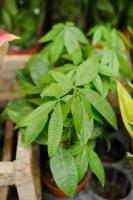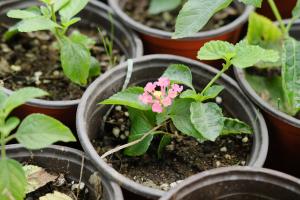Where to Plant Fig Trees in Georgia
Fig trees are a staple in Georgia's warm climate and can provide delicious fruit for years to come. However, selecting the right area to plant your fig tree is crucial as it will significantly impact its growth and fruiting. Keep reading to learn where to plant fig trees in Georgia.
Climate Requirements
Before you start searching for a spot to plant your fig tree, you need to understand its climate requirements. Figs thrive in zones 7-11, which includes Georgia. They prefer a hot and dry climate with minimum temperatures of 20°F. Frequent freezing temperatures can damage the tree, so it's best to avoid planting in areas that experience late frosts.
Soil Requirements
The soil's quality is crucial when it comes to fig tree growth and fruit production. Figs prefer well-draining, loamy soil that is slightly acidic (pH 6.0-6.5). They struggle in heavy clay soil, which does not drain well and can cause root rot. Before planting your fig tree, test the soil's pH and composition to ensure it meets the standards.
Sunlight Requirements
Fig trees need a minimum of six hours of direct sunlight daily to grow correctly and produce quality fruits. While they can still survive in partial shade, they will produce fewer fruits and will not grow as tall as those planted in full sun. Therefore, it's best to plant your fig tree in an area with plenty of sunlight exposure.
Spacing Requirements
Fig trees can grow relatively large, reaching a mature height of up to 30 feet and width of up to 50 feet. Therefore, it's essential to select an area with enough space to accommodate the mature tree's size. The recommended spacing between trees is 15-20 feet to allow for adequate airflow and prevent diseases.
Other Considerations
When choosing where to plant fig trees in Georgia, there are other factors to consider, including access to water and wind protection. The tree requires consistent watering, especially during the hot and dry months, and the soil should remain moist but not waterlogged. You can also plant your fig tree in an area with wind protection, such as near a fence or a tall building, to prevent wind damage.
In conclusion, selecting the right area to plant your fig tree is crucial to ensure its growth and fruit production. Make sure to consider the climate, soil quality, sunlight exposure, spacing requirements, and other factors before planting your tree. With proper care, your fig tree can provide delicious fruits for years to come.

 how many times do yo...
how many times do yo... how many planted tre...
how many planted tre... how many pine trees ...
how many pine trees ... how many pecan trees...
how many pecan trees... how many plants comp...
how many plants comp... how many plants can ...
how many plants can ... how many plants and ...
how many plants and ... how many pepper plan...
how many pepper plan...




























